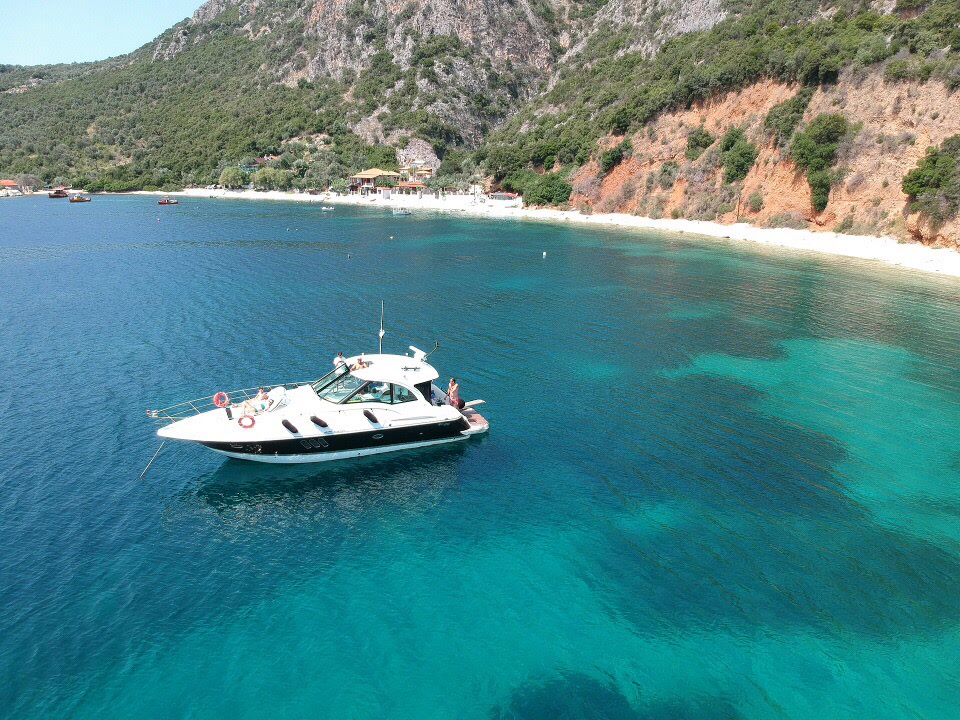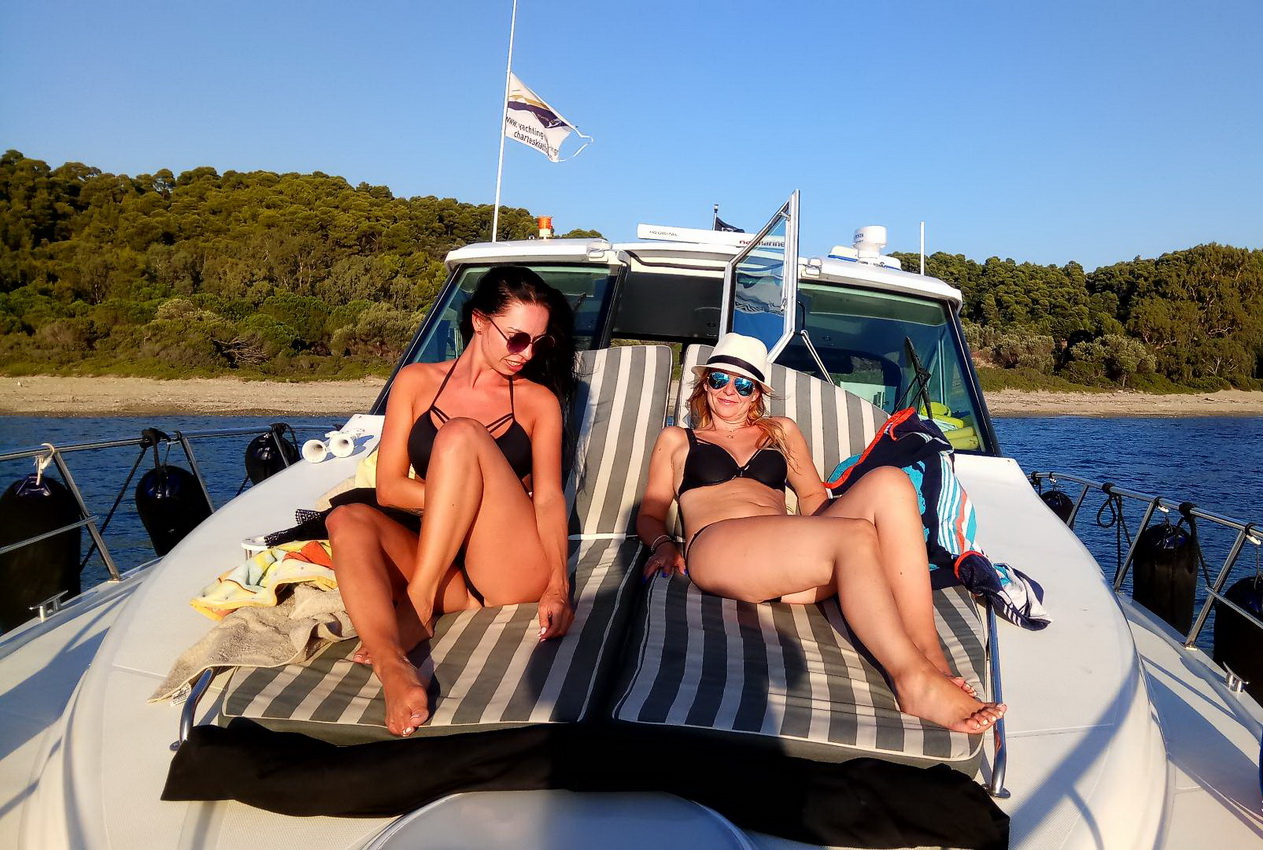- Fax (+30) 2421076900
- Mobile (+30) 6976292001
- This email address is being protected from spambots. You need JavaScript enabled to view it.
- 24 time
( 250 Miles Trip ) Skiathos - Skyros - Skiathos
The largest of the Sporades, low-key Skyros has a more Cycladic feel than its richly forested siblings and often seems like two entirely separate islands: small shimmering bays, rolling farmland and swaths of pines (plus an air-force base) speckle the north, while the south features arid hills and a rocky shoreline. In Greek mythology, Skyros was the hiding place of the young Achilles, who is thought to have ridden a Skyrian horse into Troy: these endangered small-bodied horses can still be seen in the wild, if you're lucky.
What is a boutique cruise
A boutique cruise is a unique sailing experience that will take you to places you never imagine on a comfortable home-like ship. Boutique cruises take place on small and medium vessels and therefore accommodate only a small limited number of travelers. Therefore the atmosphere on board is relaxed and the service is exceptional. A boutique cruise ensures a direct connection to nature and maximum proximity to the sea.
- Set sail on the seas near North Sporades thanks to this private, flexible-length sightseeing cruise aboard a motor yacht. Pick between half-day and full-day trip options as you explore secluded coves, hidden beaches and historic lighthouses
- Departing from the port of Skiathos at 09.00 and returning at 21.30 pm
- First stop for 1 hour on the island of Tsugria for bath and breakfast.
- Then, after a 2 hour trip, stop at Skyropoula Island for relaxation, swimming and snorkeling on the virgin island with its pristine seals caves.
- Next, a stop at Skyros Port Linaria where we have lunch at one of the traditional restaurants offering a rich selection of fresh fish and lobster or any other tastes. (Restaurant visit not included in travel price).
- Optionally you can visit the country of Skyros by taxi from Linaria port.
- After 3 hours stop for lunch and a visit to the country of Skyros we go to the famous beach of Atsitsa for a last swim in Skyros.
- At 18.00 we start the return journey.
- A final stop, after a 2 hour trip, to Arcos Island for a swim, sunset, fruit and afternoon coffee or tea
What do I need to bring?
Responsible travel policy: Our aim is to reduce as much as possible the negative and increase the positive impacts our operational practices have on the social and physical environment within the areas of our operation. During briefing, our team will inform you of how we try to achieve this in practice.
Today's breakfast includes a boat trip to the islands of Northern Sporades Pefkofyta, with coves, crystal clear waters, fishing villages.
Sunscreen, hat, towel, swimsuit and find your place on the boat to enjoy the most beautiful view.
You do not have to worry about ... the procedure: you have hired a Yacht with a captain who takes care of everything.
- Snorkel and mask - How else are you going to find your own Atlantis submerged among Greece’s many islands?
- A copy of Homer’s Odyssey - Catch up on the adventures of the original island hopper as you follow in his mythical footsteps.
- Sandals/flip flops - Exploring 9,000 miles of coastline and the country’s many secluded, sandy beaches is hot work.
- Swimwear - Even if you can’t swim, you’ll need one to get the tan of a lifetime.
- Sun protection - You’re almost guaranteed 13 hours of sunshine in midsummer so don’t forget to tan sensibly and always wear sunscreen.
- Confirmation will be received at time of booking
- Children must be accompanied by an adult
- Adult pricing applies to all travelers
- A minimum of 2 people per booking is required
- A maximum of 8 people per booking
- Evidence of dive certification is required from all divers wishing to participate in a certified dive
- Each traveler is allowed a maximum of 1 suitcase and 1 carry-on bag. Oversized or excessive luggage (e.g. surfboards, golf clubs or bikes) may have certain restrictions, please inquire with the operator prior to travel to confirm if your excess luggage is acceptable
- The duration of transfers are approximate, the exact duration will depend on the time of day and traffic conditions
- A current valid passport is required on the day of travel
- You MUST confirm and obtain any visa requirements prior to border crossing. All visa requirements are the sole responsibility of the traveler
- Subject to favorable weather conditions. If canceled due to poor weather, you will be given the option of an alternative date or full refund
- You can present either a paper or an electronic voucher for this activity.
- All flight times are approximate and subject to change due to weather conditions and weight restrictions.
Hotel pickups commence approximately 30 - 60 minutes prior to this time, exact pickup time will be advised on reconfirmation.
Tour departs within walking distance of the cruise port
History of Skyros
Skyros was inhabited from the Neolithic period (5500-2800 BC) as testified by the remains that have been found in various areas of the island. Flourishes during the early Bronze age (2800 – 1900 BC) and reaches the peak of acme during the Mycenaean period (1650 – 1100 BC). Skyros has a significant presence in geometric and archaic years. In 475 BC is conquered by the Athenians and in 323 – 322 BC passes into the hands of the Macedonians. In 197 BC, the Romans occupied it and then the Byzantines succeeded them, where Skyros was a part of the Aegean Sea. Skyros also had a variety of names over the course of centuries since antiquity and the years that followed, most owed its origin to the morphology, land, people and nature. Named Aigibotos (that which nourishes goats), Anemoessa (because of winds), Pelasgia as inhabited by the Pelasgians, Dolopia, island of Dolopon, Perirrytos, surrounded by sea, Pelagia, island of open sea, Skyros because of the porous stone that excavated in quarries and other many names mentioned by ancient geographers and following writers at different periods of time. Skyros is also mentioned in Greek mythology, and its presence was perceptible throughout the course of Greece. There are four mythical persons connected with the island of Skyros. Theseus, Lycomedes, Achilles and Neoptolemus. When Theseus, after his labors, returned from Hades was disappointed by the Menesthea who took the throne, decided to go to Skyros, from where he came from and had a fortune from his father Aegeus. Arriving in Skyros was the King Lycomedes, who annoyed and fearing of the presence of Theseus, whom he considered a competitor to the throne, decided to exterminate him. So he met his tragic end in Skyros, one of the greatest heroes of Greek mythology. T In the Palace of Likomidis also lived Achilles, who his mother Thetis had hidden him here, because she knew that if her son was fighting at Troy, we would have had a tragic end. In the Palace of Likomidis, Achilles fell in love with the King's daughter Deidamia, who gave birth to their son, Pyrrhus. Odysseus was the one who led Achilles in Troy, resorting to his trick of known identification of Achilles and the story followed the known to us course. After the death of Achilles, his son Pyrrhus, at the age of just 12 years old, went to Troy, again with Odysseus’ commixture and fought bravely and thereafter was named Neoptolemus (new to war.). The first inhabitants of Greece were the Pelasgians and with them the Carians, the Leleges, the Dryopes and Dolopians. Genders of these people lived in Skyros, where we have the first defensive walls in Skyros from Pelasgians. Skyros was a possession of the Athenians, after Kimon’s ruling and apart from minor periods, remained Athenian hegemony for 389 years. During this time, the conquerors alternated by Athenians, Persians and Macedonians, up to 197 BC where Skyros became a Roman possession. The Roman domination succeeded Byzantium and Skyros was part of the Aegean Sea and prevailed on the island the Christian religion. In 1204 Constantinople was conquered by the Crusaders, and began the dismemberment of the Empire between the Frankish king Boniface of Montferrat and the Doge of Venice. Skyros was occupied by the brothers Ghizi, as Skiathos, Skopelos and Mykonos, and became acquisition of Venetians and Franks. In 1538 Skyros was conquered by the Ottomans, but with many privileges, as well as the fact that in the island did not remain for long nor Turkish troops, or Turks rulers. During the Ottoman rule, Skyros, suffered greatly from pirate raids, which forced residents to flee in the Castle. In the struggle of national independence in 1821, Skyros offered plenty of economic assistance, sent many sailors in the domestic fleet, offered shelter to chieftains and treated several thousand refugees from various cities of Greece. Today the tradition of the manners and customs of Skyros testify its ancient origins, while there's evidence in the museums and monuments of its great past.
ARCHAEOLOGICAL SITE OF PALAMARI

RUPERT BROOKE
Skyros island lies almost in the center of the Aegean Sea, and placed in Sporades Island complex, although the distance is greater than the distance of the island of Evia, which lies about 35 kilometers east (22 nautical miles) . Its area is estimated to be approximately 210 sq. km. miles, while its population is about 3,500 residents.
Price includes
- 4 islands Skiathos, Tsougria, Skyropoula, Skyros, Arko Fuel surcharge WIFI breakfast 24% Entry tax National Marine Park Goods & services tax. Departure tax. All taxes, fees and handling charges Environmental Management Charge (Reef Tax) Landing and facility fees 2 X Sea Scouter. Life jackets Towels Bottleds water Light refreshments Many Snacks Unlimited beer wine and soft drinks Glass of Champagne
Price excludes
- Bus fare,Restaurant visit not included in travel price Lunch,Gratuities (recommended),Transfer to marina (extra) Boat transfer (extra)Exquisite wines (extra)Yoga on board (extra)Professional photography (extra)Special decoration for weddings,Birthday cake (extra)
Cancellation policy
- We will charge a cancellation fee of 100% if booking is cancelled 10 days or less before event.We will charge a cancellation fee of 50% if booking is cancelled 30 days or less before event.We will charge a cancellation fee of 0% if booking is cancelled 60 days or less before event.






























